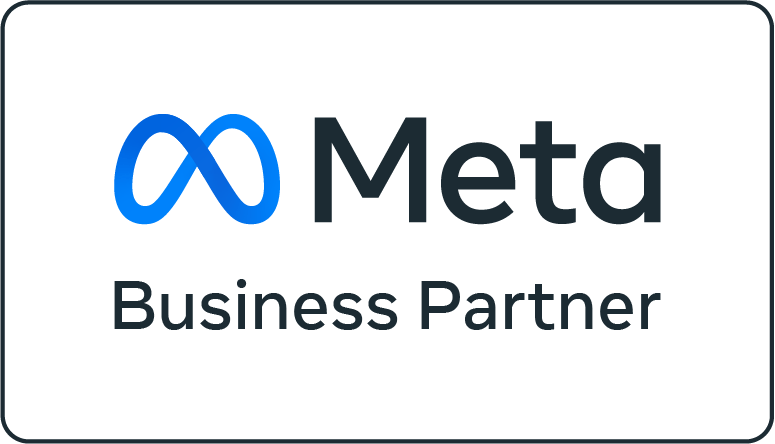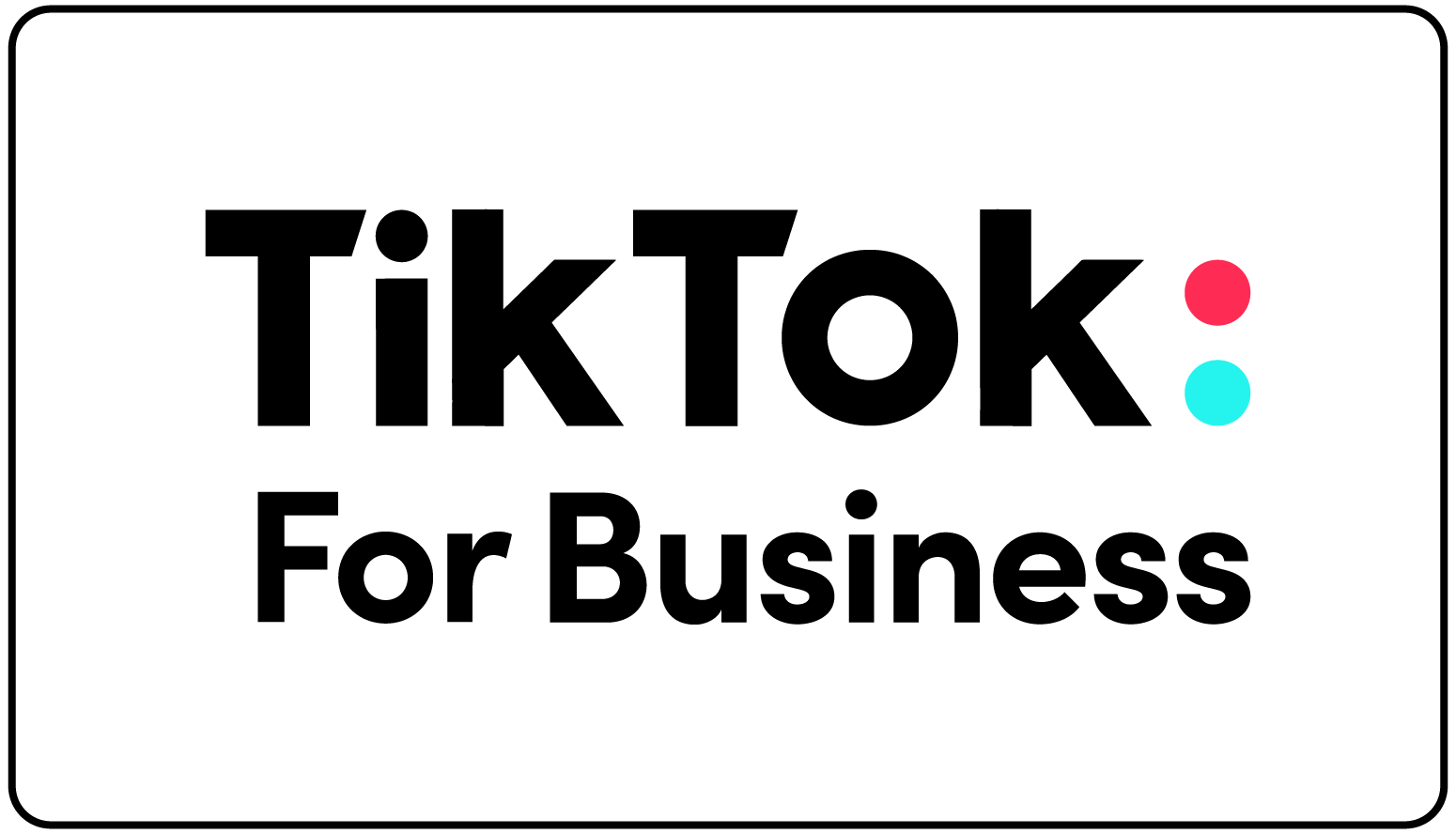By Howie Zisser
Over the past several months, Facebook has been rolling out new features to help us marketers reach more of the people interested in what we have to sell. But for now, we’re going to bring it all the way back to your Marketing 101 seminar – market segmentation. We covered this back in 2014 but realized we’re overdue for an update.
At its core, segmentation is pretty simple. Let’s go to everyone’s favorite source of information, Wikipedia, and see what they have to say about it: “Market segmentation is a marketing strategy which involves dividing a broad target market into subsets of consumers, businesses, or countries that have, or are perceived to have, common needs, interests, and priorities, and then designing and implementing strategies to target them.”
We could talk all day about the different ways professionals use segmentation, so let’s just jump right in and take a look at the newer Facebook features!
Geographic
This one’s pretty simple: you can target your ads based on a customer’s location. Within Facebook, you can target by country, city, region, zip code, or you can even drop a pin on the map for ultra specific targeting:
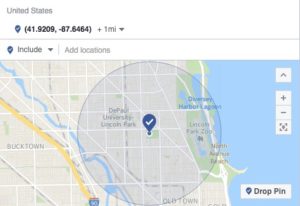
You’ll hear a lot about personalization in marketing these days, and this is one of the simplest ways to do that: speak to your customer directly about what’s happening near them. Or you can use what you know about that city to market specific products. For example, a clothing brand can focus their offerings based on the specific trends of a particular area.
You can also target your ads based on where people are traveling to, which is especially effective for events like SXSW:
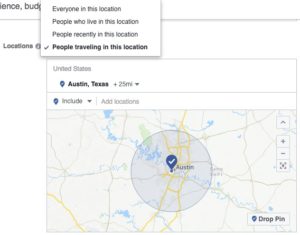
This is a new feature in Ads Manager and has made marketing big ticket events so much easier!
When using this function within Ads Manager, it’s important to note that this based on people’s actual location and not just their interest. Plenty of people are interested in a place like New York City, but it does you no good to market a local product/service to someone merely interested in the city if they’re actually living in Ames, Iowa.
Geographic segmentation is even more powerful when you take into account the dominance of mobile over desktop usage. Particularly when you’re using narrow requirements (think the pin drop), you can capture the attention of your segment at the most opportune and relevant time.
You can even create a specific set of ads only for mobile users:

You can even take this another step further and only target certain kinds of devices:
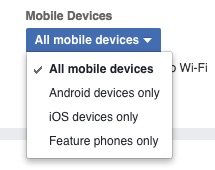
It’s well known that Android users and iOS users have different behaviors, so this is an opportunity for you to really hone your message to connect to the way those users think, feel, and act.
Demographic
Demographic segmentation is pretty straightforward on the surface, but there’s so much you can do with this one. Demographics are what you use to distinguish one market from another like age, gender, race, income, occupation, family size, marital status, etc. Each of these can be separate segments or you can use combinations to create segments (ie females between the ages of 28 and 35 with an income over 50K):
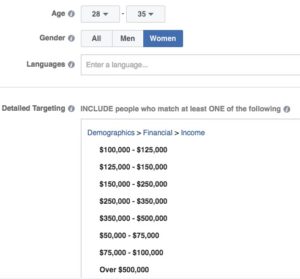
Detailed Targeting
Facebook has built-in demographics to help you target those most likely to find value in your business:

It’s important to note here that you can choose to target and/or to exclude certain criteria:
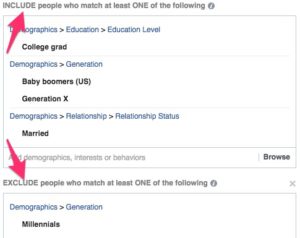
So in this example, we’ll be targeting Generation X and Baby Boomer College Grads who are married, while excluding Millennials.
After digging through the above options and the endless combinations, you might be asking yourself, “How does Facebook know all this about me?!?!?!” and that’s a pretty fair question.
Some of it you willing provide, like your age or education. Some of it is based on the pages you like on Facebook. But that’s only a piece of the story.
Assuming you don’t log off of Facebook each time you leave the site, they are tracking you and the types of sites that you’re visiting. Everywhere you go online gets cataloged and added into your overall story – wild, right?! That might explain the all too timely ads you see from time to time.
Psychographic/Lifestyle
This segmentation is based on the type of lifestyle your audience has and answers questions like: Where can you find them on a Friday night? What kind of hobbies are they interested in? How do they view the world around them? What do they find fun?
Some examples provided by Facebook Ads Manager:
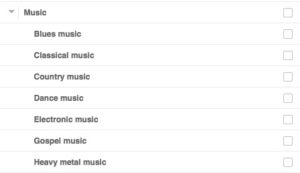
You can also find segments based on a person’s behavior, like what kind of purchases they make:

Within you Facebook Ads Manager account, you can switch over to Audience Insights which will give you a clearer picture into your desired segments.
For this example, I created a segment for everyone in the United States that is interested in a local Chicago brewery, Lagunitas Brewing Company:

This gives us a picture of the average Lagunitas drinker: higher earners, parents, career driven. With this information, you can go back into Ads Manager and create new ads targeted for these well-defined segments.
Data-Based Segmentation
With all of the advancements Facebook has made on their ads platform, it has given us a unique opportunity to segment our audience based on real data and not just hypotheticals. Keep in mind that doing the above segmentations can work great and oftentimes will lead you to key learnings about your customers, but sometimes you need to get more scientific with your segments.
When creating your Ad Set, you can choose to present your offering based on a customer’s connections:
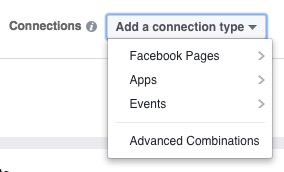
Within this setting, you have plenty to choose from. Personally, I like to use the Advanced Combinations feature to create unique segments:
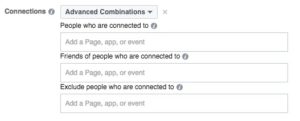
This enables me to cover a broad spectrum of people that are already interested in what I have to say, friends of those have expressed interest (thereby, more likely to be interested themselves), and lastly to exclude people I don’t think would be a good match (saves budget!)
Custom Audiences
Here’s a chance to use the information you’ve already collected to create highly targeted and relevant ads. This is one of the newest features Facebook has unveiled and there’s more getting added all of the time. Inside Ads Manager, you have the option to create a custom audience:
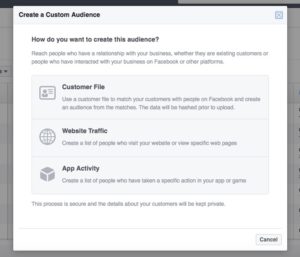
The ‘Customer File’ option is the most straightforward of them all: simply upload the list you (hopefully) already have of your customers’ emails and phone numbers.
Moving to the ‘Website Traffic’ option, you’ll have a lot more choices to make. You can target based on specific pages a visitor has seen, such as a blog:
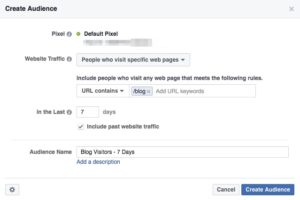
Or you can go a bit more advanced and only target those who have visited your blog, but NOT the purchase page:
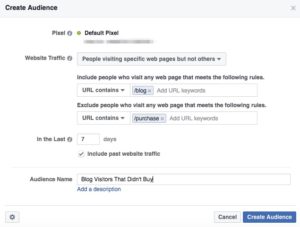
And finally, you can do Custom Combinations of nearly anything you can imagine happening on your site from certain pages being visited (or not visited), to certain actions being taken like an email sign up or a purchase.
Lookalike Audiences
Similar to Custom Audiences, you can create a segment based on the traits of your own predefined audiences, making it easier for you to connect with other people who think similarly to those you’ve already done business with.
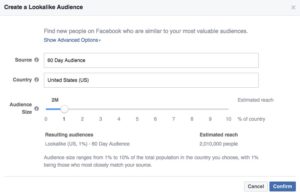
This lookalike audience will create a new segment based on those who have visited my site in the last 60 days.
Last Thoughts
Facebook has done a tremendous job in providing us the types of tools to better connect with our target audiences. The more people use Facebook, the more data we will have to deliver the best possible experience to our customers.
To steal a line from Facebook, “Move Fast, Break Things.” By that I mean, it’s now your turn to take this information and start running experiments to see what works best for you. For more advanced Facebook marketing tactics, check out our podcast with Facebook Marketing Strategist, Jon Loomer.



